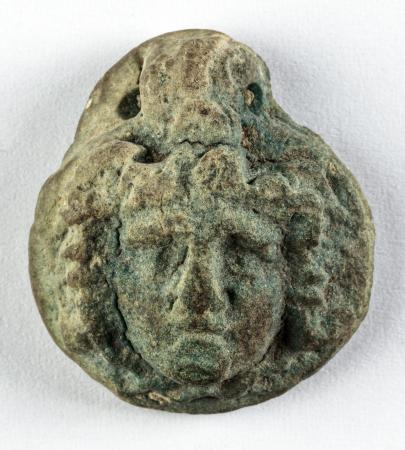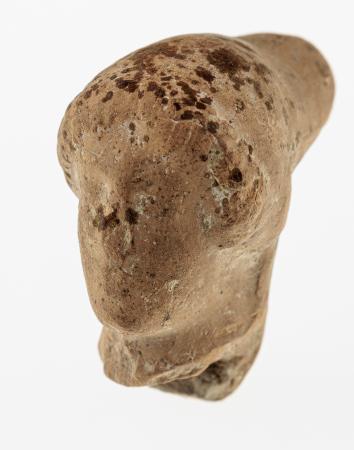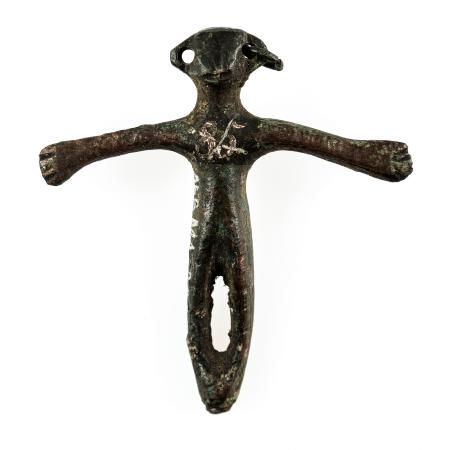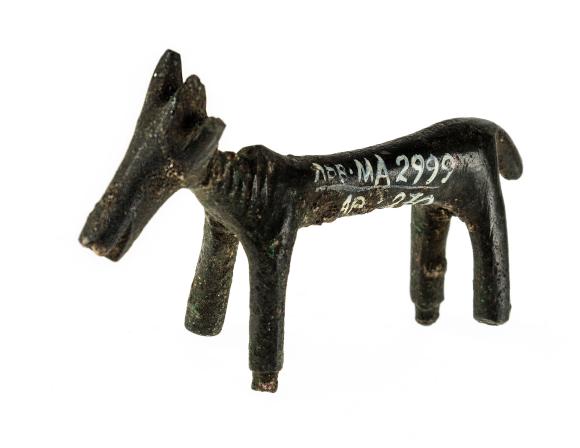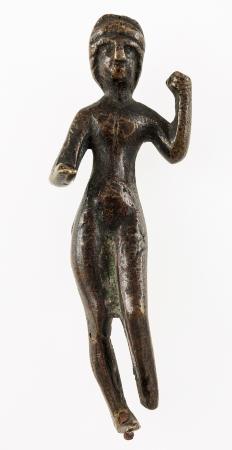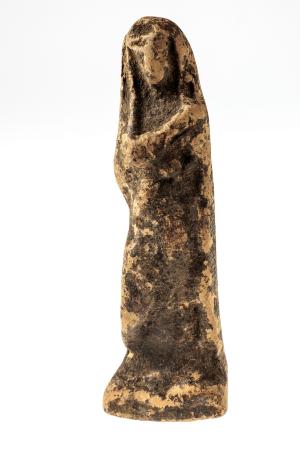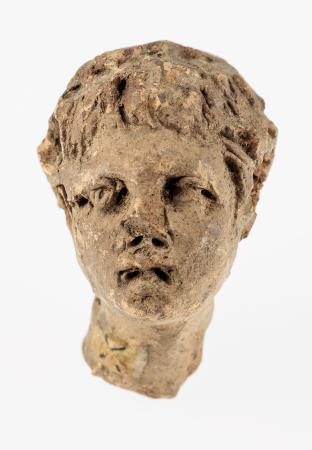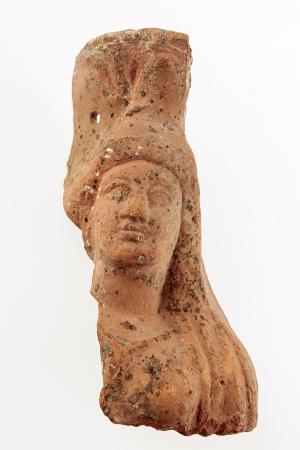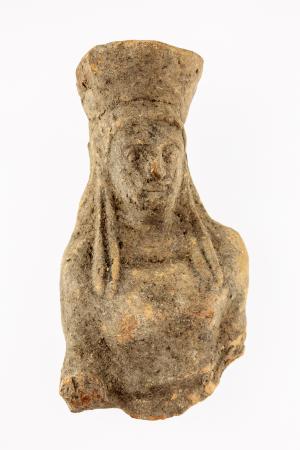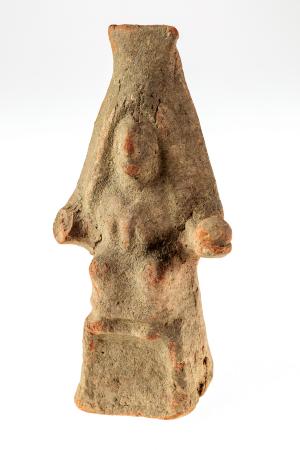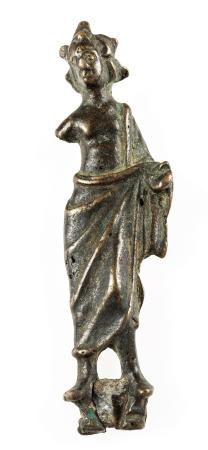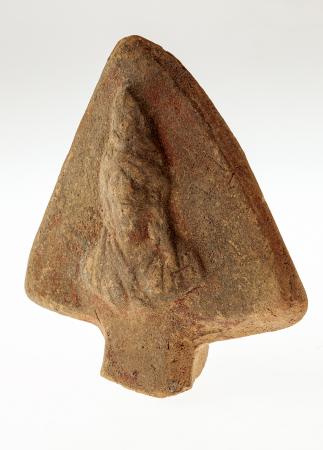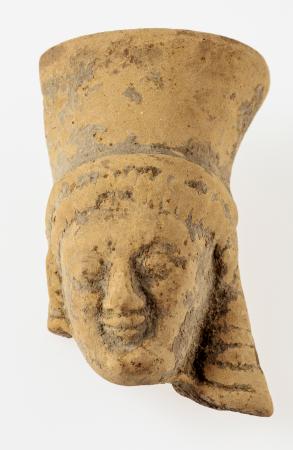Horse
- Inventory number:
- АР-169
- Creation Date:
- 4th - 3rd millennia BC
- Place of Creation:
- Koshylivtsi village, Ternopil region
- Provenance:
- Lviv Historical Museum
- Technique:
- molding
- Size:
- 10 x 3 cm
- Material:
- clay
- Type of object:
- Sculpture
- Subject:
- Cucuteni–Trypillia culture
We can see indistinct outlines of the animal’s body parts. The head is elongated. The front limbs are more distinct, while the hind limbs are less so. The tail is broken off. It is made of orange clay. According to the works of O.P. Zhuravlov, we can confidently speak about the domestication of the horse by the Cucuteni-Trypillians. One of the arguments he presents is that the remains of domesticated horses are known from settlements of the earlier Buh-Dnister Neolithic Culture, dating back to the 6th millennium BC. Therefore, the fact that the Trypillians kept horses as domestic animals should not be dismissed. Archaeologist Vikentiy Khvoyka discovered the first Cucuteni-Trypillian settlement in present-day Ukraine in 1893–1894 on 55 Kyrylivska Street in Kyiv. However, the culture was named after the village of Trypillia of Kyiv Region. The area of its spread in Eastern Europe ranged from the Dnipro River to the Carpathians, from Polissia to the Black Sea and the Balkan Peninsula. The settlements of the Trypillians covered a significant area and are referred to as proto-cities. One of the distinguishing features of this culture was the burning of their homes, which could have been caused by soil depletion, a lack of resources for livestock grazing, or perhaps it had a ritual significance. The Trypillians were primarily engaged in cultivation, grain farming, fishing, pottery, weaving, metallurgy (including copper processing), and animal husbandry.



